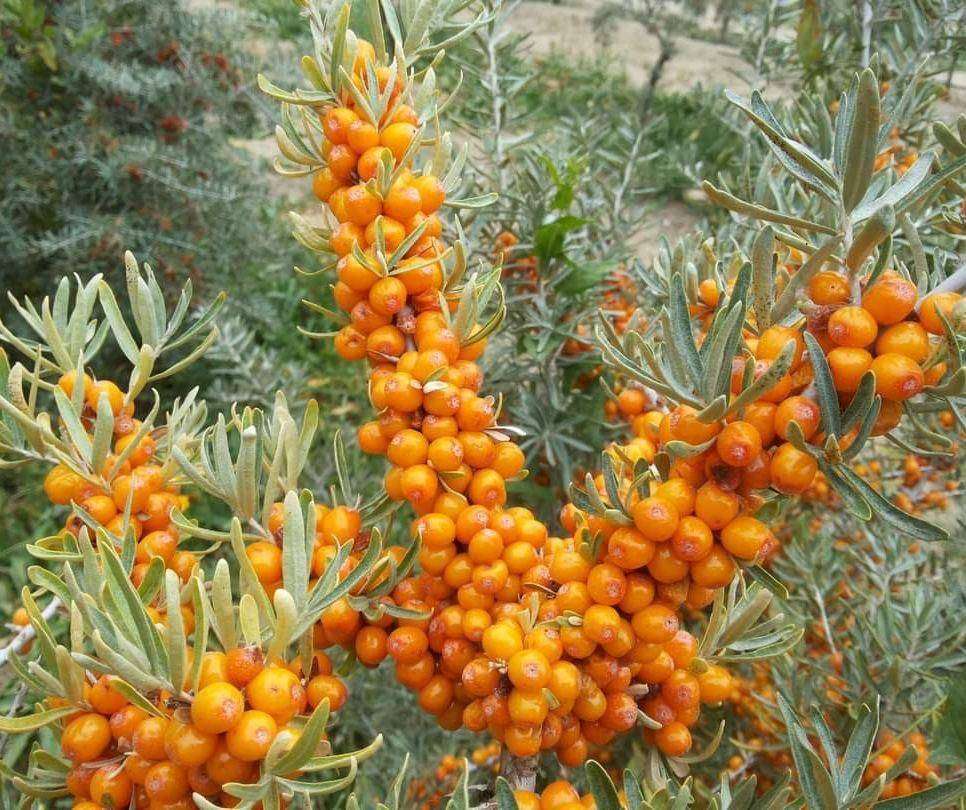Last Updated on September 16, 2020 at 11:38 pm
It is a bumper crop of seabuckthorn this time in the wilds of the cold desert region of Ladakh where those collecting the berry and also the newly established startups by youngsters for pulping the wonder berry are making good amount of money.
The financial gains have also come in the tourism hit Ladakh as there was great demand of the berry pulp in the country because import of the product from China that is biggest producer of seabuckthorn was hit due to coronavirus. Covid-19 pandemic has taken its toll on Ladakh that is not only preferred by domestic but also by international tourists.
A large number of men and women are dependent on tourism industry directly or indirectly in the arid desert of Ladakh as there are few other opportunities due to the unique geopolitical situation of the region.

Plucking of seabuckthorn began earlier this week and the activity would last only 20 days. A scientist of the Defence Institute of High Altitude Research (DIHAR), Tsering Stobdan, who is connected with research on seabuckthorn, posted on social media; “Ladakh Seabuckthorn harvesting begins. A source of income for the needy section of the society. Price expected to increase despite the pandemic”.
Youngsters, who have set up pulping units as startups, were excited as they were earning because of the bumper crop of which pulp was the main marketable component.
The berry has recorded phenomenal increase in price as it fetched Rs.8 for each kilogram in 2001 and this time it was being procured for Rs.50 to Rs.55 per kg. Similarly, the berry pulp was this time fetching anything between Rs.170 to Rs.180 per kg against Rs.150 of last year, said an entrepreneur. The price might even touch Rs.200 per kg, he expected.
Harvest of the berry has also witnessed a sharp increase from 170 tons in 2004 to 361 tons in 2015 and is expected to touch 600 tons this season. The turnover of the berry harvest in 2030 has been projected at Rs.20 crores against Rs.50 lakhs in 2004 and Rs.3.6 crore in 2019.
Stobdan said that as compared to other places of the country, Ladakh contributes for 70.9% of the total area under seabuckthorn, followed by 15.3% in Uttrakhand, 7.6% in Himachal Pradesh and 6.1% in Sikkim. The main berry producing areas in Ladakh are; Indus, Nubra, Suru, Changthang and Zanskar valleys.
Men, women and children in the rural Ladkah are these days seen out of their houses early morning to collect the highly perishable berry from the wild. The process is completed in three to four hours and the collected berry brought at the procurement bases of their respective areas.
Tsewang Nurbu, an agriculture graduate, who was unemployed and has under the startup scheme set up a pulping unit in Nubra, said that his unit was working in two shifts a day to meet the demand of the product. He has employed 15 persons, 6 of whom were women. The unit has helped in women empowerment. All employees are students working for extra money, he said.
Many youngsters engaged in tourism have been hit badly as the hospitality industry has come to a grinding halt because of the pandemic and under this scenario “when we talk about a sustainable job I can picture only ‘agriculture’, as I believe people and animals will never stop consuming food. And I always wanted to devote my life to something which is sustainable and the agriculture sector is the one which is both economically and environmentally sustainable”, he said.

Apart from using as a health drink (with abundant source minerals and vitamins especially the Vitamin C which is believed to be more than any other fruit plant) it is used in medicinal purposes for treating various ailments. Medicinal value of seabuckthorn was recorded as early as the 8th century in the Tibetan medical classic.
DIHAR has developed several antioxidant rich products from the berry and its leaf to combat high altitude related oxidative damage. Seabuckthorn beverages, herbal tea, oil capsules, jam, jelly, appetizer, UV protective cream and animal feed are some of the products that have been got patented by the DIHAR.



